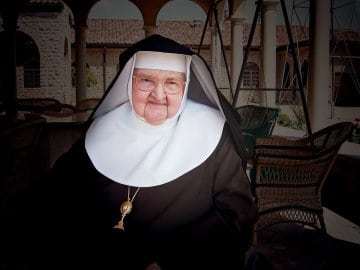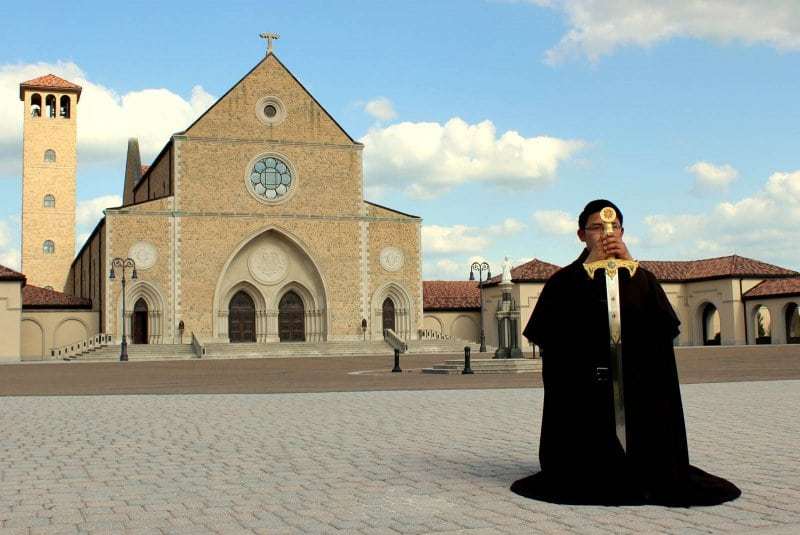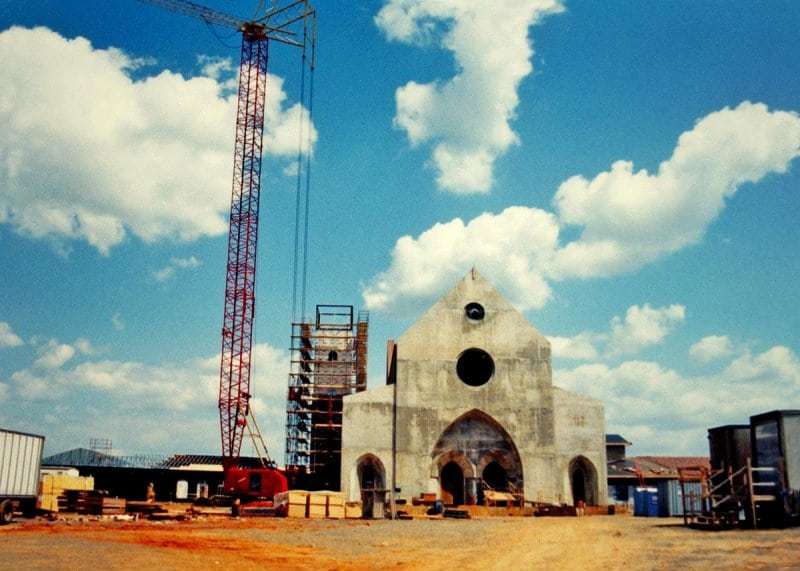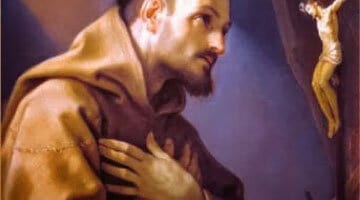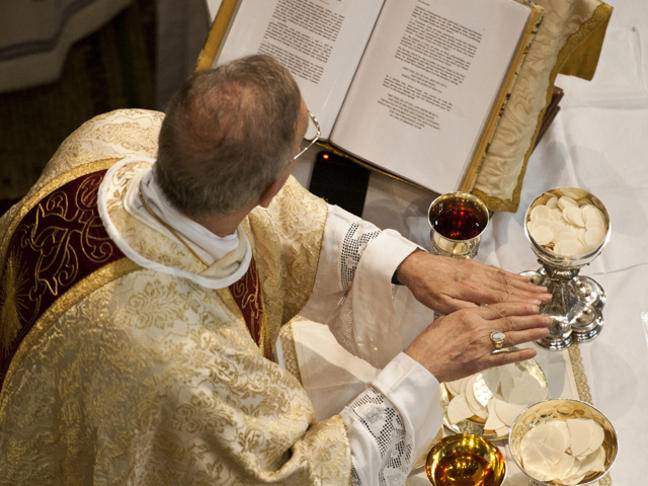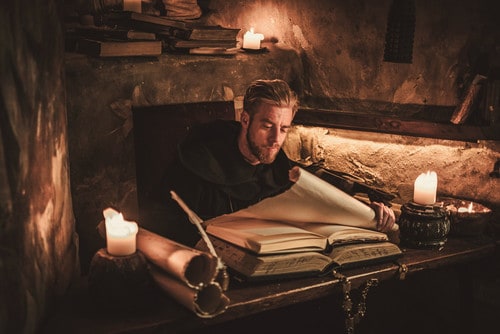FOUNDERS AND FOUNDRESSES
OF RELIGIOUS INSTITUTES
I. Introduction
From the time when Pope Pius XI published Unigenitus Popes have repeatedly addressed the role that founders and foundresses of religious institutes have played in the Church. Consecrated men and women became more focused on this same issue when certain documents from Vatican II relating to the nature of the Church asked them to take a deeper look at their founders or foundresses and the mission that properly characterizes each religious family. Those documents also raised concerns about the meaning of the term “charism” as it referred to the founder or foundress as well as how that term could be applied to a religious institute. Post-conciliar documents continued these same themes and have provided needed clarification. Furthermore, since the Code of Canon Law is considered to be one of the last texts of Vatican II, it has a pivotal place because it articulates key concepts and the way they can become a lived reality.
This brief paper, then, seeks to address two questions. One of them is: Who can properly be called a founder or foundress? Secondly, Can a female be the foundress of a clerical institute? In addition to using various Church documents, the Code and the praxis of the Holy See to explore these questions, this author will also look at how such questions have been addressed throughout history.
II. Church Documents and the Code of Canon Law
When we look at the history of religious institutes, it is evident that there are many ways of being a founder or foundress. Some of the distinguishing aspects that can be found in the founder or foundress of a religious institute are: a) the inspiration to found a group, b) the ability to gather a group of followers and form them, c) naming the group, and d) initiating the development of its constitution and/or Rule of Life. The common denominator in all founders or foundresses is that the person is a bearer or architect of an original inspiration.
Founding a religious institute is a gradual process. It matures over the course of time. Therefore, it is always difficult to trace the exact moment of the foundation. Some institutes have a very specific date or event while others choose the date of the canonical erection. However, this latter choice is often risky because it can confuse the foundation with the juridical erection.
The founder or foundress mediates a divine gift that is received for the Church and within the Church. The founder is deeply immersed in the life of the Trinity and needs to be an example and a teacher of the spiritual life. This person leads others in the way of the perfection of charity because the person has been totally transformed into Christ.
Sometimes founders or foundresses receive the inspiration to found an institute because the person has had a vision or some special illumination. Others have an ordinary encounter. However, it is of great intensity. Their discovery of what is being asked is a slower process. All of them, though, receive enlightenment through deep prayer, reflection, dialogue, and asking for the wisdom of others. The grace of the Holy Spirit is always evident in these experiences. In addition to the time it takes to receive the initial inspiration to found a religious institute, founders or foundresses usually go through an even longer process before founding a specific institute. In other words, they take their time before defining the particular characteristics of their institute. In an attempt to name the central issues transpiring when this process is taking place, there is a Church document that makes important points about the process. Mutuae Relationes (1978) says:
In a genuine charism there is always a mixture of new creativity and interior suffering. The historical fact of the connection between charism and cross, apart from other factors, which may give rise to understanding, is an extremely helpful sign in discerning the authenticity of the call of the Spirit. (12)
Charism is understood as a gift of grace that God gives to those whom he calls to fulfill a specific mission in and through the Church (Lumen Gentium 7h; 12b; 8a). It involves not just extraordinary gifts but also simple ones. The Holy Spirit distributes these gifts to men and women for the renewal and building up of the Church.
Church documents are filled with expressions such as “charism of founders, “charism of an institute or “foundational charism.” This means that moving from the charism of the founder or foundress to the charism of the particular institute is a special undertaking. While the Code of Canon Law never uses the word charism, it does state the dynamic in another way. Canon 578 says, “All must observe faithfully the mind and designs of the founders regarding the nature, purpose, spirit, and character of an institute, which have been sanctioned by competent ecclesiastical authority, and its sound traditions, all of which constitute the patrimony of the same institute.” Patrimony includes the mind and disposition of the founder or foundress. However, in using founders, the plural form, it is evident that often times more than one person founds a particular institute. Founders, therefore, can be those people, not just that person, who unfold the original inspiration for the foundation of the divine gift that is being given to the Church. Therefore, patrimony becomes their intentions and their ways of actualizing the institute which must be submitted for authorization to Church authority.
There are various stages before a group is erected as a religious institute. Often times the group begins by living in an associative form with no formal recognition by Church authority. The stages usually begin with a de facto, tacit approval, and slowly move toward approval as a private association (canons 299, 310). The next stage includes approval of the statutes, the recognition of the association as a juridic person (canon 322) and finally its erection as a public association (canons 313-313).
In some of these associations there are clerics either for the association itself or because the distinctive charism requires the ministry of clerics. Deacons as well as priest are clerics. These groups intend to eventually be recognized as institutes of consecrated life. When there are clerics in the public associations that have juridic status, there is need for more canonical reflection on various aspects. Some of the essential issues include: 1) formation, including the fact that they have no seminary of their own, 2) incardination, and 3) the granting of dimissorial letters for ordination. The current Code of Canon Law has no explicit provision for incardination in such associations. Canon 265, however, sees the possibility of a concession of such a faculty by referring to a group outside of the association that is “endowed with this faculty.” In these circumstances, it is evident that the constitutions of such a group should incorporate the various aspects that pertain to these issues.
Another significant source for understanding groups that eventually are erected as an institute of consecrated life is canon 588. It says, “§1. By its very nature, the state of consecrated life is neither clerical nor lay. §2. That institute is called clerical which, by reason of the purpose or design intended by the founder or by virtue of legitimate tradition, is under the direction of clerics, assumes the exercise of sacred orders, and is recognized as such by the authority of the Church. §3. That institute is called lay which, recognized as such by the authority of the Church, has by virtue of its nature, character, and purpose a proper function defined by the founder or by legitimate tradition, which does not include the exercise of sacred orders.” The principle that institutes are neither clerical nor lay is a new one in the law and the definitions of those two types of institutes are new. In the 1917 Code of Canon Law, a numerical dominance of priest members was the criterion given to determine that the institute was clerical. In the above canon, an institute is clerical when, by reason of the purpose or aim intended by the founder, or in virtue of legitimate tradition, three characteristics are simultaneously present: 1) it is under the direction of clerics, 2) takes up the exercise of sacred orders, and 3) is recognized as clerical by the authority of the Catholic Church. The emphasis is on reverence for the intention of the founder and the legitimate traditions, combined with the recognition of the Catholic Church.
These provisions do not negate the permission which has been given to institutes which have both clerical and lay brothers to grant lay brothers certain administrative roles. Indeed, conciliar and post-conciliar documents provided that brothers take a more active role in the life and governance of the clerical institute and are eligible for certain offices. The offices of superior and vicar are reserved to clerics. Additionally, it does not alter the provision which has been made for congregations of brothers to put forth certain of their members for the reception of orders, particularly in service to need for ministerial priesthood in their own institutes. The significance of distinguishing clerical and lay institutes arises in other parts of the law, especially with reference to participation in ecclesial governance (canon 596, §2).
The list of required documents that must be sent to the Congregation for Institutes of Consecrated Life and Societies of Apostolic Life (CICLSAL) when a Public Association of the Faithful wants to be erected as a religious institute only uses the term founder. It never specifies that such a person has to be either one sex or the other. However, such a list also includes a description of governance and formation. In clerical institutes there are specific aspects that must be included. The requirements of CICLSAL include the following elements: a) the names of the founder and the first superior general along with a curriculum vitae of each, b) a historical-juridical account of the association from its beginnings including the decree of erection as a Public Association of the Faithful, c) the constitutions and the directory of the institute revised in accordance with the Code of Canon Law, d) where applicable, a picture of the religious dress of both a professed member and a novice, e) up to date statistics of the membership, including the year of birth and of temporary and perpetual profession, the place and diocese where houses are located and the works of the institute, f) an account of the financial patrimony of the institute including debts, g) statements regarding any extraordinary experiences or particular devotions and whether in the diocese of origin there already exists another institute with the same purpose and name, and h) testimonial letters from the diocesan bishops of those diocese in which the institute is represented; such letters are to be sent directly to the Holy See giving the opinion of the bishops about the following matters: usefulness, stability, discipline of the institute, formation of members, government, administration of goods, liturgical and sacramental dimensions, a sense of being with the Church, particularly in regard to the observances of ecclesiastical discipline as expressed in the common law of the Church and in the diocesan directives, and i) the “deposit” of 500 euros equivalent to $682.
III. Some Examples from History
When history is examined very closely, it is evident that there are many different ways of being a founder or foundress. The well known St. Anthony was not properly speaking a founder. He was neither the first anchorite nor did he leave any particular religious institute behind him. However, no one would say that his personal holiness did not have an enormous influence on monasticism. Others, such as St. Basil, St. Augustine and St. Benedict wrote Rules by which one or several institutes came to live throughout the centuries. Others were founders because they created a centralized institute in which they were superiors and wisdom teachers. There are also cases where founders have given their sons or daughters the Rule or Constitutions of some older Institute. In such cases the Rule of Augustine, Benedict or Francis is followed along with Constitutions. Many founders were members of the Congregation they founded. Others were not. Most founders directly governed their communities, but even some of these people decided to hand over the ordinary day to day governance of the institute to others for one reason or another.
The history of women’s foundations reflects the evolution of the social position of women throughout the course of history. Initially, monasteries for women had to have a man as their founder. For example, St. Caesarious of Arles and St. Leander of Seville composed a Rule for nuns. In other cases, women adopted a Rule written by men. The question that often gets asked is: Wouldn’t these rules reflect a typically male mentality? Another question that gets asked is: Would certain Constitutions have been different if feminine minds and hearts had figured into their composition? It is harmful and, perhaps, unjust to apply such concerns to the Rules mentioned above. When there is such an evangelical and ecclesial intensity present, such Rules transcend sexual differences. For example, history indicates that the monk/abbot relationship was lived in an intensely feminine manner in the nun/abbess relationship.
Another point that can be made is that alongside of the founder who wrote the Rule, women of eminent sanctity and strong personality can be found. In the case of Pachominus, Benedict, Caesarious and Leander the very strong woman was their own natural sister. In the case of St. Francis, it was St. Clare.
Around the time of the Council of Trent we find a woman independently creating her own religious family. That person was St. Angela Merici and the Company of St. Ursula. St. Teresa of Avila guided a group of men as well as her own group of women. In the description of women who acted on their own but availed themselves of the counsel of a male director there is St. Maria Micaela of the Blessed Sacrament and St. Rafaela Maria of the Sacred Heart.
From the seventh century on there appears a new model of a founding couple: St. Francis de Sales and St. Jane de Chantel; St. Vincent de Paul and St. Louise de Marillac; St. Anthony Claret and Antonia Paris, Servant of God; St. John Bosco and St. Maria Mazzarello. Such a list could go on and on. In some cases a holy woman has felt so completely in sympathy with the spiritual aims and personality of a holy man that a communion of spirits was established between them. In other cases the idea for the foundation emerged out of the relationship between a woman and her confessor or spiritual director. In those cases, it is often hard to say who had the idea first. In other cases a bishop or priest had the idea of founding an institute. Since the inspiration seemed to be orientated toward a ministry that was feminine, the bishop or priest had to gather a group of women for the ministry. In other cases it was a woman who felt the call to create a new family. However, given the social position of women at the time, she would not have realized her ideal without availing herself of the support of a man, usually the bishop of a diocese. In some of these cases, it would seem that one person is the founder while the other one is the co-founder. The significant questions that need to be asked in analyzing who serves as the founder and/or foundress are: 1) How did the ideal for the institute first emerge? 2) To what extent did each of the parties involved influence the shaping of the institute’s mission and spirit?
IV. Conclusions
This brief paper has sought to answer the question: Who can properly be called a founder or foundress? The response lies in determining who the conveyer of the original inspiration was. That process includes the person’s disposition concerning the nature, purpose, spirit and character of the religious institute. The traditions of the institute must be wholesome and approved by competent ecclesiastical authority. As this paper has demonstrated, it is evident that there can be more than one founder or foundress of a particular religious institute.
The other question that has occupied the space in this paper has been: Can a female be the foundress of a clerical institute? If she meets the criteria described in these pages regarding the call to found a religious institute, it is apparent that she can be considered a foundress. However, in accordance with canon 588 which requires that a clerical institute be under the direction of clerics, it would be impossible for her to provide such direction. Canon 588 is one of many canons that point in such a way. Therefore, a priest or bishop has to join with her in founding the institute so that the issues named in this paper about a clerical institute can be addressed. As history shows, there have been many holy men and women who have joined in their efforts to found religious institutes. There are examples of people who turned over the governance of an institute to another individual. All of these people have been considered founders and foundresses and have been accepted by ecclesiastical authority. The reason stems from the fact that the source of their inspiration has been the Holy Spirit who has moved in these various ways for the sake of the mission of the Church: the preaching of the Gospel message.

